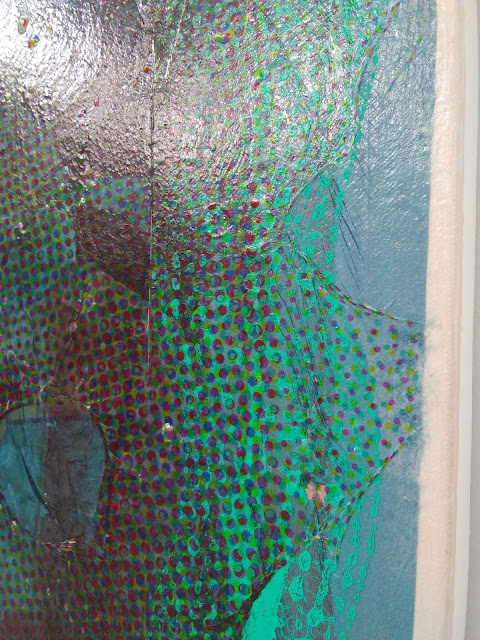 |
| Brian Belott with one of his frozen pieces. |
It's rare when one comes across an artist whose work is so wild, so unique, that even their storage system is like nothing ever seen in a studio before. I was already aware of the frozen artworks of Brian Belott, but on a recent visit to his studio, I wasn't quite prepared when he opened the door to his chest freezer, reached in and started showing me what was inside--it seemed like he was reaching into another world. Retrieved from the icy appliance were an array of astonishing pieces made from a variety of household items such as hair gel, toothpaste, plastic novelties, Play-doh and string--all suspended in blocks of frozen water.
During the visit, Brian also took the time to show me samples from all his distinct lines of work. I've always thought that one sign of a great artist is the ability to flip from one medium or way of working to something completely different while maintaining the primacy of their message and the continuity of their overall body of work. I was shown hand-made artist books, self-published books yet to be released, reverse glass paintings, collaged thrift store pieces, puff paintings, and some very large works on paper with colored sand mixed in the paint. It was aesthetic overload, but it was bliss.
We also carried on a long discussion involving our personal views on art as we ambled through the space. Brian shared how he's researched the writings and archive of Rhoda Kellogg, a champion of children's art in the 1960s and 70s. Additionally, Belott's own personal connection to that genre also runs deep as he recently organized an exhibition about Kellogg and her work at White Columns in January of this year.
Throughout our visit, I was given strong doses of information about art history, past and recent, along with the sense that Brian Belott knows who he is and where he's going as an artist. His incisive knowledge of art, coupled with his constant searching for new ground is what makes him one of the most exciting artists working today, and it's also what makes his inclusion in the 2019 Whitney Biennial so essential.
 |
| Here's a sneak peek (and three more below) of Brian's yet to be released and aptly titled book, FRIGIDAIRE. |
 |
| Bags of colored sand. |








































